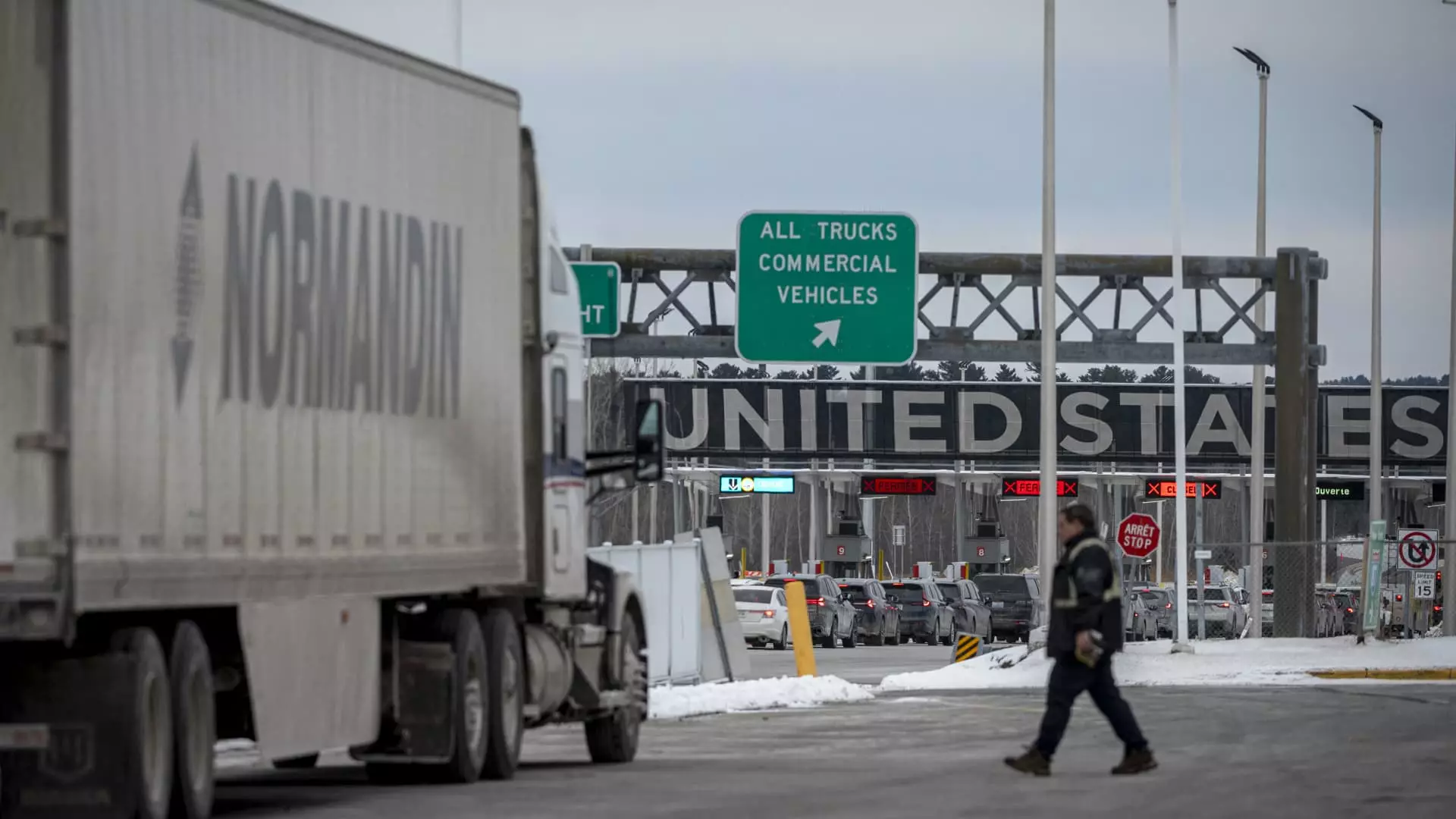The imposition of tariffs has become a defining feature of international trade policy, especially in the context of the ongoing U.S. trade tensions. Recently, President Donald Trump signed an executive order that establishes significant tariffs on crucial trading partners—specifically, 25% on imports from both Canada and Mexico and a 10% tariff on goods from China. This move, designed to shift the dynamics of trade and bolster domestic production, nevertheless raises pressing concerns regarding its implications for American consumers and the broader economy.
The initial prediction among economists is that these tariffs will not provide the expected relief from elevated borrowing costs in the near term. Instead, consumers may find themselves facing increased prices for a variety of goods and services. The underlying concern is that such price hikes could exacerbate inflation, creating a precarious situation for the Federal Reserve as it navigates its interest rate policy.
The introduction of these tariffs is predicted to impose upward pressure on inflation rates. In a climate where inflation rates have not stabilized at desired targets, this surge in prices could compel the Federal Reserve to reconsider its strategy of reducing interest rates. Economic analysts highlight that the benchmark interest rate decided by the Federal Reserve significantly influences borrowing costs for consumers, affecting everything from credit cards to mortgages.
As noted by Paul Ashworth, Chief North America Economist at Capital Economics, the landscape for potential interest rate cuts seems to be closing. With inflationary pressures potentially rising, the appetite for policy easing by the Fed diminishes. The immediate consequence of sustained high inflation could prevent the central bank from undertaking anticipated interest rate cuts, which would have otherwise offered some relief to beleaguered consumers.
The unpredictability of political decisions adds another layer of complexity to forecasting the economic landscape. For instance, Trump recently indicated a temporary pause on tariffs pertaining to Mexico following negotiations with the Mexican leadership concerning border security. This exemplifies the fluidity of trade policies, where changes occur rapidly based on political negotiations and diplomatic relations.
Moreover, the uncertainty surrounding the implementation of these tariffs clouds economic predictions. Economists like Susan Collins, President of the Federal Reserve Bank of Boston, emphasize the difficulty of maintaining accurate economic forecasts amid such shifting political climates. This unpredictability complicates the assessment of the potential long-term economic impact of tariffs and raises questions about the overall stability of the economy.
Long-term economic projections remain dire, suggesting that sustained tariffs could lead to an increase in U.S. inflation between 0.5 to 1 percentage points through 2026. This inflation is primarily linked to the surging costs of consumer goods, as estimated by J.P. Morgan’s analysis. Crucially, the Personal Consumption Expenditures Price Index, which is favored by the Fed, is expected to reflect these changes, pressing the central bank to maintain—or even raise—interest rates to combat inflationary trends.
The estimates suggest that, if tariffs are fully enacted, inflation could reach approximately 2.8% by the fourth quarter of 2025, a trajectory that could fundamentally disrupt anticipated economic growth. In fact, growth projections indicate a potential reduction in the U.S. Gross Domestic Product (GDP) by as much as 1%, illustrating that while tariffs are intended to protect domestic industries, they may inadvertently stifle overall economic performance.
As the landscape evolves, experts remain divided on the applicability of further monetary policy adjustments. While some assert that tariffs could prompt the Federal Reserve to implement rate hikes to combat inflation, others believe the negative economic drag associated with the tariffs will necessitate a more cautious approach to monetary policy. Therefore, understanding the intricate balance between inflation, economic growth, and interest rates appears to be key for consumers and investors alike.
The introduction of tariffs on critical imports presents a multifaceted dilemma. While aimed at protecting domestic industries, the tariffs are likely to elevate consumer prices, complicate interest rate strategies for the Federal Reserve, and introduce a wave of uncertainty within the market. As policymakers weigh their options, the long-term implications of these tariffs could reverberate through the economy for years to come, leaving consumers and businesses alike to grapple with the consequences.

